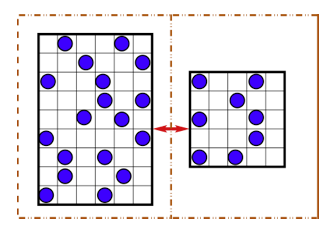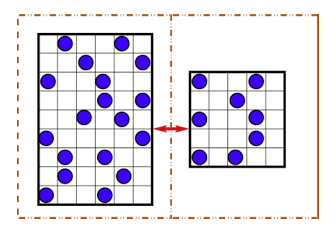Touching Gases Settle Down
A system in equilibrium is characterized by a few intensive parameters such as temperature and chemical potential. The zeroth law of thermodynamics implies that when two systems can exchange a conserved, extensive property (e.g., molecules), their intensive parameters (e.g., the chemical potentials) must eventually equalize.
Do such parameters exist for far-from-equilibrium systems? We know that intensive thermodynamic parameters can be defined for nonequilibrium stationary states in systems with short-range spatial correlations. To test whether this is possible in the presence of long-range correlations, often found in such stationary states, Punyabrata Pradhan and colleagues at the University of Stuttgart, Germany, writing in Physical Review E, analyze the driven lattice gas (DLG), a favorite “toy model” of nonequilibrium statistical mechanics, in which particles with short-range interactions hop around on a lattice.
Suppose a DLG, characterized by its size, interparticle interactions, and bias, is placed in contact with an equilibrium lattice gas. Eventually the particle densities of the two gases attain two different stationary values. Consider a second DLG, with different properties, that “equilibrates” via contact with a copy of the equilibrium lattice gas used in the first experiment. If stationary contact between the two systems can indeed be characterized by an intensive variable, we should expect no change in the respective particle densities of the two DLGs while in contact. Using Monte Carlo simulations, the authors verify that the densities, upon contact, indeed remain nearly unchanged, but that there are deviations from the zeroth law, which can be largely understood in terms of an excess chemical potential associated with the contact region. – Ron Dickman





